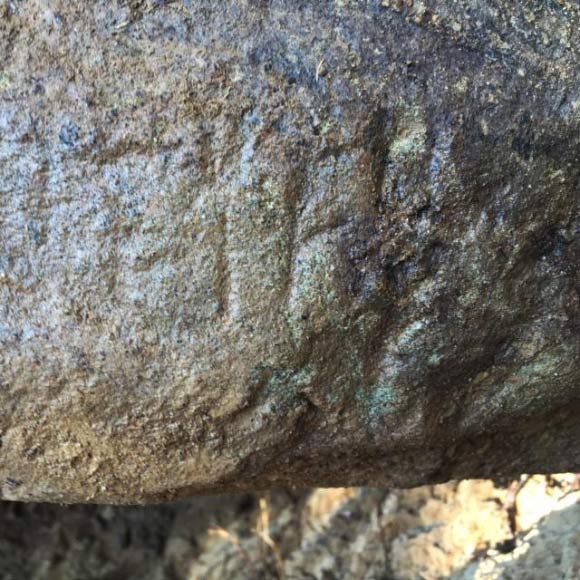A team of scholars translating a unique inscription on a 2,500-year-old Etruscan stele has discovered the name Uni – an important female goddess.

Inscribed surfaces of the 2,500-year-old Etruscan stele have revealed mention of the goddess Uni as well as a reference to the god Tina, the name of the supreme deity of the Etruscans. Image credit: Mugello Valley Project.
The discovery indicates that Uni – a divinity of fertility and possibly a mother goddess at this particular place – may have been the titular deity worshipped at the sanctuary of Poggio Colla, a key settlement in northern Etruria, Italy, for the ancient Etruscan civilization.
“The mention is part of a sacred text that is possibly the longest such Etruscan inscription ever discovered on stone,” said team leader Prof. Gregory Warden, co-director and principal investigator of the Mugello Valley Archaeological Project and an archaeologist at Southern Methodist University.
Prof. Warden and his colleagues discovered the 2,500-year-old sandstone slab (stele) embedded as part of a temple wall at Poggio Colla.
“That object reinforces the interpretation of a fertility cult at Poggio Colla,” Prof. Warden said.
The ancient stele has at least 70 legible letters and punctuation marks, likely with new words never seen before. It is roughly 4 x 2 feet (1.2 x 0.6 m) and has a mass of 500 pounds (227 kg).
“The location of its discovery – a place where prestigious offerings were made – and the possible presence in the inscription of the name of Uni, as well as the care of the drafting of the text, which brings to mind the work of a stone carver who faithfully followed a model transmitted by a careful and educated scribe, suggest that the document had a dedicatory character,” said team member Adriano Maggiani, formerly Professor at the University of Venice.
“It is also possible that it expresses the laws of the sanctuary – a series of prescriptions related to ceremonies that would have taken place there, perhaps in connection with an altar or some other sacred space,” Prof. Warden added.
It’s possible the text contains the dedication of the sanctuary, or some part of it, such as the temple proper, so the expectation is that it will reveal the early beliefs of a lost culture fundamental to western traditions.
Besides being possibly the longest Etruscan inscription on stone, it is also one of the three longest sacred texts to date.
One section of the text refers to ‘tina?,’ a reference to Tina, the name of the supreme deity of the Etruscans. Tina was equivalent to ancient Greece’s Zeus or Rome’s Jupiter.
“We can at this point affirm that this discovery is one of the most important Etruscan discoveries of the last few decades,” Prof. Warden said.
Etruscans once ruled Rome and influenced Romans on everything from religion to government to art to architecture.
Considered one of the most religious people of the ancient world, Etruscan life was permeated by religion, and ruling magistrates also exercised religious authority.
Permanent Etruscan inscriptions are rare, as Etruscans typically used linen cloth books or wax tablets.
“It’s a discovery that will provide not only valuable information about the nature of sacred practices at Poggio Colla, but also fundamental data for understanding the concepts and rituals of the Etruscans, as well as their writing and perhaps their language,” Prof. Warden said.
The team’s results will be published in the November issue of the journal Etruscan Studies.
_____
Gregory Warden et al. 2016. Etruscan Studies 19 (2)







